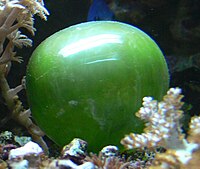
Soluble epoxide hydrolase activity and pharmacologic inhibition in horses with chronic severe laminitis
Sign Up to like & getrecommendations! Published in 2017 at "Equine Veterinary Journal"
DOI: 10.1111/evj.12603
Abstract: BACKGROUND The roles of soluble epoxide hydrolase and lipid mediators in inflammatory and neuropathic pain could be relevant in laminitis pain management. OBJECTIVES To determine soluble epoxide hydrolase (sEH) activity in the digital laminae, sEH… read more here.
Keywords: soluble epoxide; laminitic horses; epoxide hydrolase; laminitis ... See more keywords

Assessment of horse owners’ ability to recognise equine laminitis: A cross‐sectional study of 93 veterinary diagnosed cases in Great Britain
Sign Up to like & getrecommendations! Published in 2017 at "Equine Veterinary Journal"
DOI: 10.1111/evj.12704
Abstract: BACKGROUND Use of owner-reported data could further epidemiological knowledge of equine laminitis. However, owner recognition of laminitis has not previously been assessed. OBJECTIVES The primary objective was to establish whether cases of owner-suspected laminitis would… read more here.
Keywords: cross sectional; owner; study; laminitis ... See more keywords

Continuous digital hypothermia prevents lamellar failure in the euglycaemic hyperinsulinaemic clamp model of equine laminitis.
Sign Up to like & getrecommendations! Published in 2019 at "Equine veterinary journal"
DOI: 10.1111/evj.13072
Abstract: BACKGROUND Continuous digital hypothermia can prevent the development and progression of laminitis associated with sepsis but its effects on laminitis due to hyperinsulinaemia are unknown. OBJECTIVES To determine the effects of continuous digital hypothermia on… read more here.
Keywords: continuous digital; laminitis; model; digital hypothermia ... See more keywords

Predictors of laminitis development in a cohort of non-laminitic ponies.
Sign Up to like & getrecommendations! Published in 2022 at "Equine veterinary journal"
DOI: 10.1111/evj.13572
Abstract: BACKGROUND Quantifying risk factors for laminitis development requires improvement. OBJECTIVES To identify the most useful physical examination, metabolic and management factors to predict laminitis development in client-owned, non-laminitic ponies. STUDY DESIGN Prospective cohort study. METHODS… read more here.
Keywords: development; laminitis development; laminitic ponies; insulin ... See more keywords

A review of cellular and molecular mechanisms in endocrinopathic, sepsis-related and supporting limb equine laminitis.
Sign Up to like & getrecommendations! Published in 2023 at "Equine veterinary journal"
DOI: 10.1111/evj.13933
Abstract: Equine laminitis has both fascinated and frustrated veterinary researchers and clinicians for many years. The recognition that many ponies suffering from pasture associated laminitis have an insulin dysregulated phenotype (endocrinopathic laminitis, EL) and that prolonged… read more here.
Keywords: supporting limb; laminitis; sepsis related; molecular mechanisms ... See more keywords

Incidence and risk factors for recurrence of endocrinopathic laminitis in horses
Sign Up to like & getrecommendations! Published in 2019 at "Journal of Veterinary Internal Medicine"
DOI: 10.1111/jvim.15497
Abstract: Abstract Background Endocrinopathic laminitis is common in horses and ponies, but the recurrence rate of the disease is poorly defined. Objectives To determine the incidence of, and risk factors for, the recurrence of endocrinopathic laminitis.… read more here.
Keywords: endocrinopathic laminitis; laminitis; factors recurrence; risk factors ... See more keywords

Fecal microbiota of horses with colitis and its association with laminitis and survival during hospitalization
Sign Up to like & getrecommendations! Published in 2022 at "Journal of Veterinary Internal Medicine"
DOI: 10.1111/jvim.16562
Abstract: Abstract Background The association of microbiota with clinical outcomes and the taxa associated with colitis in horses remains generally unknown. Objectives Describe the fecal microbiota of horses with colitis and investigate the association of the… read more here.
Keywords: microbiota horses; colitis horses; laminitis; fecal microbiota ... See more keywords

Prevalence of and risk factors for acute laminitis in horses treated with corticosteroids
Sign Up to like & getrecommendations! Published in 2019 at "Veterinary Record"
DOI: 10.1136/vr.105378
Abstract: A retrospective treated versus untreated study (study 1) and multicentre prospective cohort study (study 2) were undertaken to determine the prevalence of, and risk factors associated with, acute laminitis in horses treated with corticosteroids. All… read more here.
Keywords: acute laminitis; treated corticosteroids; per cent; study ... See more keywords

Evaluation of infrared thermography, force platform and filmed locomotion score as non-invasive diagnostic methods for acute laminitis in zebu cattle
Sign Up to like & getrecommendations! Published in 2020 at "PLoS ONE"
DOI: 10.1371/journal.pone.0235549
Abstract: This study aimed to characterize oligofructose-induced laminitis in zebu cattle and comparatively evaluate four different diagnostic methods for laminitis. A total of 29 rumen-cannulated Nelore heifers, weighing 474.5 ± 58.5 kg were used. Laminitis was… read more here.
Keywords: laminitis; locomotion; thermography force; infrared thermography ... See more keywords

Age over 25 years, but not plasma adrenocorticotropic hormone con-cen-tration above the seasonally adjusted reference range is predictive for radio-graphically assessed changes of chronic laminitis in elderly horses.
Sign Up to like & getrecommendations! Published in 2020 at "Schweizer Archiv fur Tierheilkunde"
DOI: 10.17236/sat00283
Abstract: INTRODUCTION Endocrinopathic laminitis occurs as a consequence of hormonal derangements like pituitary pars intermedia dysfunction (PPID). The objective of the present study was to assess the occurrence of radiographic changes associated with chronic laminitis in… read more here.
Keywords: laminitis elderly; age; assessed changes; laminitis ... See more keywords

Presence of Myeloperoxidase in Lamellar Tissue of Horses Induced by an Euglycemic Hyperinsulinemic Clamp
Sign Up to like & getrecommendations! Published in 2022 at "Frontiers in Veterinary Science"
DOI: 10.3389/fvets.2022.846835
Abstract: Laminitis is a pathology of the equine digit leading to a failure of the dermo-epidermal interface. Neutrophil activation is recognized as a major factor in SIRS-associated laminitis. Less is known about the role of neutrophil… read more here.
Keywords: laminitis; euglycemic hyperinsulinemic; hyperinsulinemic clamp; lamellar tissue ... See more keywords